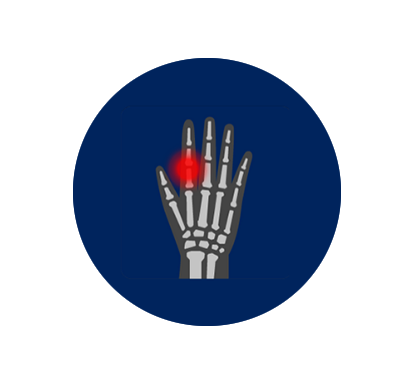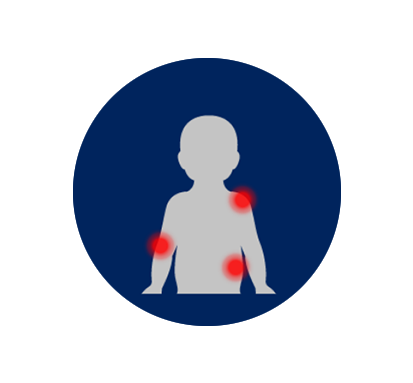
Osteoarthritis
Osteoarthritis, also known as degenerative joint disease, is the most common form of arthritis. Osteoarthritis happens most frequently in the hands, hips, and knees when cartilage within a joint begins to break down and bone begins to change. Changes with Osteoarthritis usually develop slowly, and get worse over time causing pain, stiffness, and swelling. In some cases, it can also cause reduced function or disability, with some people no longer able to do their daily tasks.

Rheumatoid Arthritis
People have rheumatoid arthritis when their immune system attacks healthy cells in their body by mistake, causing inflammation (painful swelling) in the joints. The swelling can happen in many joints at once, most often in the hands, wrists, and knees. Because the lining of the joint becomes inflamed there is damage to joint tissue, which can cause long-lasting (chronic) pain, problems with balance, or deformity. Because rheumatoid arthritis is due to immune disease, it can also affect other tissues in the body and cause problems in the lungs, heart, or eyes.

Fibromyalgia
Fibromyalgia is a condition that causes pain all over the body, as well as fatigue, and sleep problems, which may cause emotional and mental distress. People with fibromyalgia may also have an increased sensitivity to pain. Although the cause of fibromyalgia is not known, it can be effectively treated and managed.

Gout
Gout is a common form of arthritis that is very painful. It is caused by inflammation that usually affects one joint at a time (often the big toe joint). There are times when symptoms get worse, known as flares, and times when there are no symptoms, known as remission. Repeated bouts of gout can lead to gouty arthritis, a worsening form of arthritis. Although there is no cure for gout, it can be effectively treated and managed with medication and self-management.

Childhood (Juvenile) Arthritis
The most common type of childhood arthritis is juvenile idiopathic arthritis, also known as juvenile rheumatoid arthritis. Childhood arthritis can cause permanent physical damage to the joints. This damage can make it hard for the child to do everyday things like walking or dressing and can result in a disability. Although there is no cure, some children with juvenile arthritis go into permanent remission, which means the disease is no longer active. However, any physical damage to the joint will remain throughout their lifetime.

Lupus
Lupus is a long-term (chronic) disease that occurs when your body's immune system attacks your own tissues and organs. Inflammation caused by lupus can affect many different body systems, including joints, skin, and internal organs. Lupus can be difficult to diagnose because its signs and symptoms often look like other diseases. One of the most recognizable signs of lupus is a facial rash that looks like the wings of a butterfly across both cheeks.
